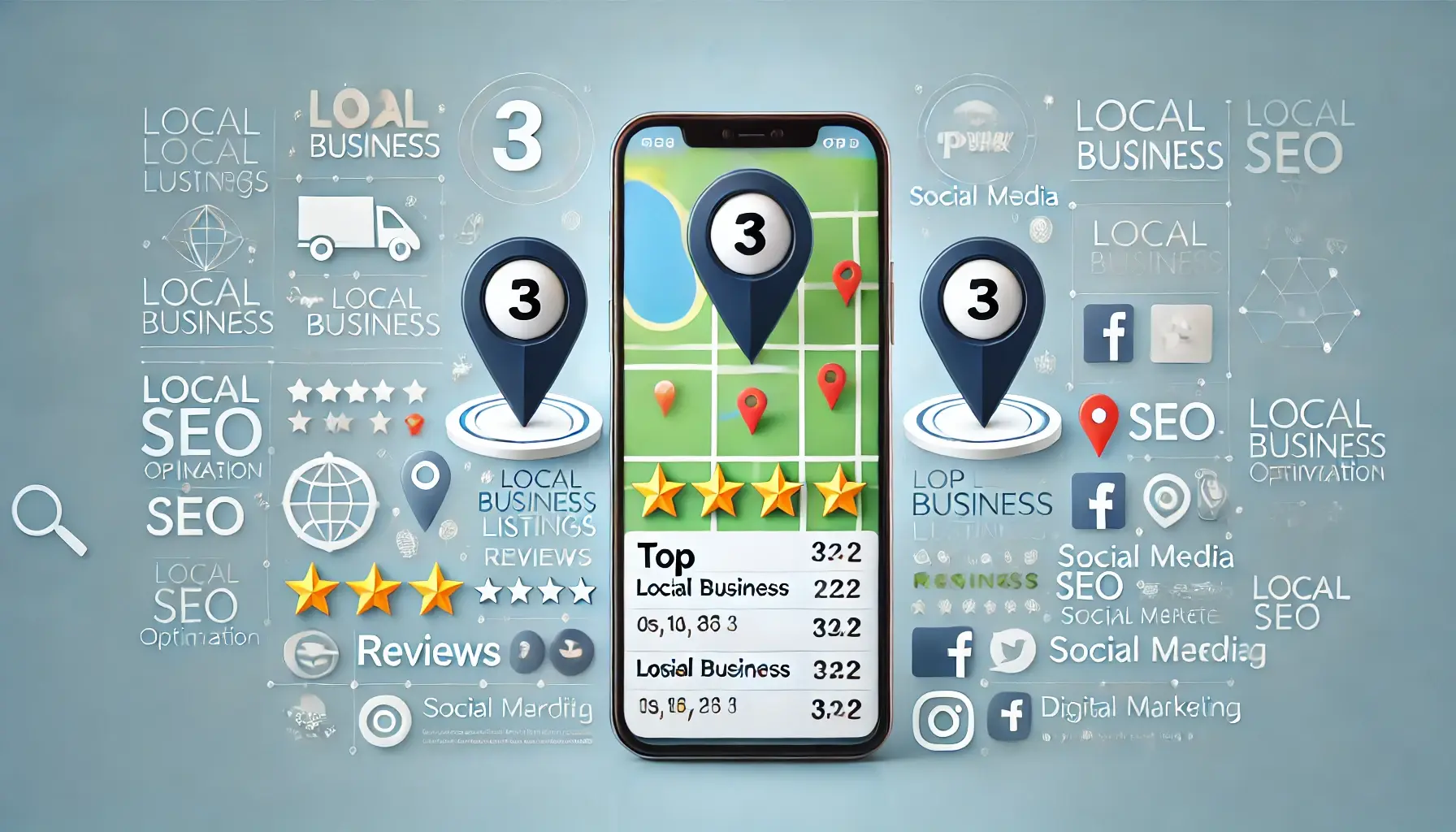
In the jungle of SEO, where international giants roam the top of search results, it can feel like a small business doesn’t stand a chance. But there’s hope! Long-tail keywords are here to level the playing field. These targeted gems have always been valuable, but now, they’re practically essential.
For marketing managers, knowing your way around long-tail keywords is a must. Here’s your guide to finding and optimizing for these keywords to drive the right crowd to your site – and keep the competition scratching their heads. Read on to learn how to discover long-tail keywords that bring traffic and new customers to your business!
What Are Long-Tail Keywords and Why Should You Care?
Long-tail keywords are precise, specific phrases that people type in when they have something particular in mind. Unlike general “head” keywords with sky-high competition, these keywords have lower search volumes and competition – plus, they pack a high conversion punch.
Check out the graph below for an example of “head,” “body,” and “tail” keywords:
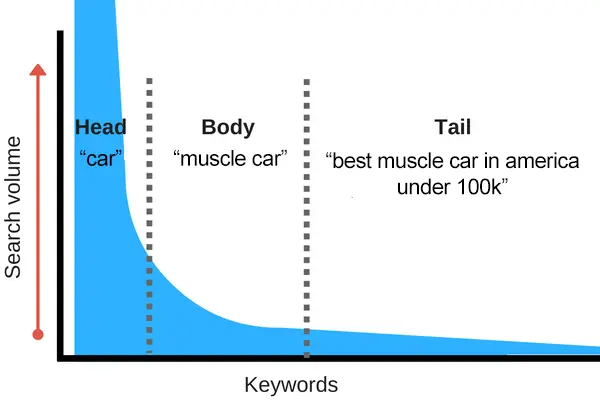
For example, instead of “car,” a long-tail keyword might be “best muscle car in America under $100k.” See the difference? The first could be a casual inquiry, but the second shows real intent, like someone who’s ready to learn or even make a purchase. That's why long-tail keywords are SEO gold.
How to Find Long-Tail Keywords: 5 Easy Methods
1. Google Autocomplete Suggestions
The first trick is as easy as pie. Take your basic keyword idea – let’s say it’s “best muscle car” – and type it into Google. But don’t hit search just yet! Look at the autocomplete suggestions. You might see options like “best muscle cars of all time” or "best muscle car 2024" which is a solid long-tail keyword right there.

2. Google’s Related Searches Box
After playing with autocomplete, hit “enter” and scroll to the bottom of the page. In the “Searches related to [your keyword]” section, Google serves up even more ready-to-go long-tail keywords. These are basically free suggestions straight from the source!

And there it is, right at the bottom of the page—our long-tail keyword "best muscle car..." in plain sight!
The beauty of using Google for discovering long-tail keywords is that they’re practically pre-qualified. If Google lists them in related searches or autocomplete, it’s a clear sign that people are actively searching for these terms. The only catch? They’re easily accessible to everyone.
Since these long-tail keywords pop up in Google suggestions, they tend to attract more competition compared to unique, off-the-beaten-path keywords. So, if you’re in a high-stakes industry, there’s a good chance your competitors have already jumped on these opportunities and started optimizing for them, too.
3. Soovle
Soovle is a clever tool that gathers keyword suggestions from multiple search engines. Plug in your keyword, and voilà – you get potential long-tail keywords from places like Google, Amazon, and even eBay! Plus, you can download the list for future use.
Here is what we get when we enter our "muscle car" keyword:
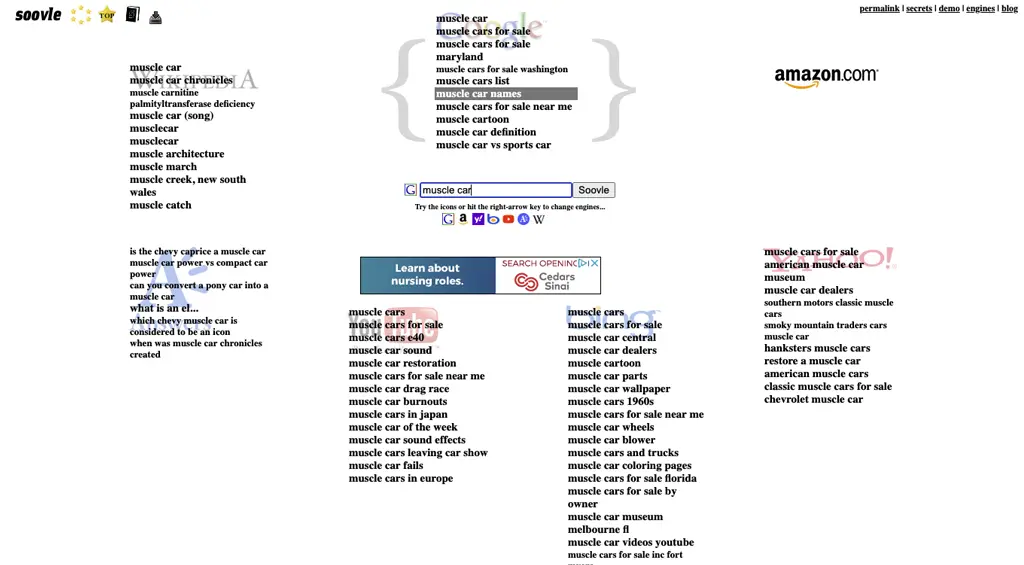
I love this technique for uncovering those hidden transactional keywords that often go unnoticed. For instance, browsing Amazon and eBay results can reveal popular guard dog-related products that people frequently search for.
If you're in the dog industry, this can be a treasure trove of insights! Soovle adds to the mix by letting you download all its suggestions into a handy CSV file for future reference.
4. Google Search Console
Your own website can be a treasure trove of long-tail keywords. Use Google Search Console to see which queries are bringing people to your site. Sort by “Position” to find hidden gems that might be on page two or beyond. A little SEO love could bring these keywords to page one.
Many businesses overlook the valuable insights right on their own website when hunting for content ideas and new keyword targets. If you manage a blog or frequently update your site, chances are you've come across a wealth of long-tail keyword opportunities without even realizing it. This is especially common with well-crafted content.
When you're creating informative articles to assist readers, you'll naturally incorporate long-tail keywords into the text. The most effective way to spot these hidden gems is through Google Search Console. To set up the report you need in Search Console, just follow these steps:
- Log in to your Search Console account
- Select the web property you’re working on.
- Navigate to “Search Results.”
- Click on “Average Position” in the top right. In the image below, it’s the purple box to the right.
- Make sure “Queries” is selected in the horizontal menu above the data list. Once “Queries” is selected, the list will show the search terms you rank for.
- Click on “Position” on the right directly above the data list to order the data by average search results position.
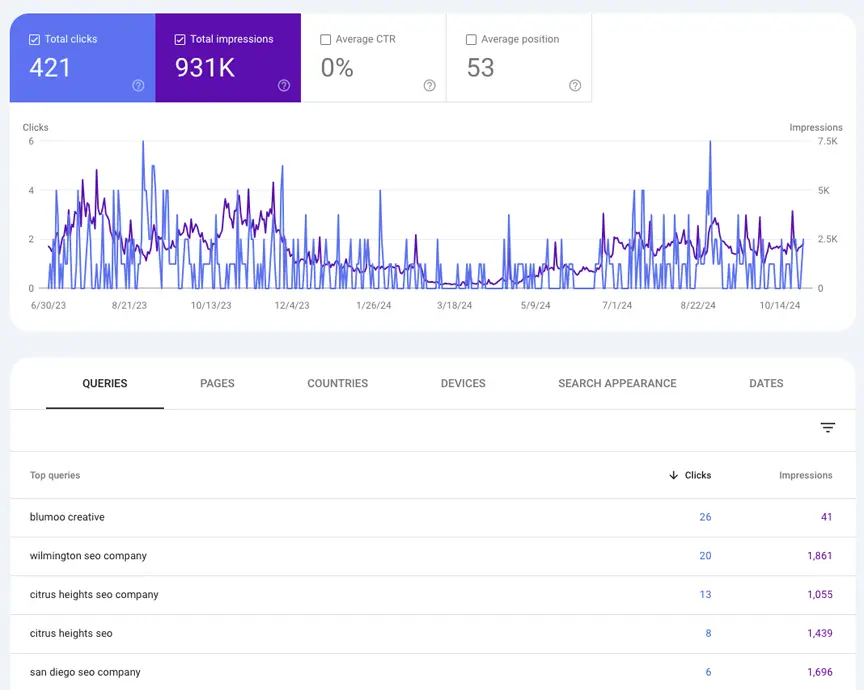
With your report ready, scroll down to view a list of search queries and see where you're ranking in the SERPs under the "Position" column. A position between 1-10 typically means you're on the first page, 11-20 indicates the second page, and so forth. Just a heads up: this data isn’t always perfectly current.
So, don’t stress if Google suggests you’re on the first page for a keyword when you’re actually on the second. Despite minor discrepancies, this tool is fantastic for uncovering long-tail keywords. Skip over any keywords you’re already ranking well for, and keep scrolling until you spot queries with a position of 11 or higher (second page or beyond).
You might discover excellent keywords you didn’t even realize you were ranking for! The best part? Click on a specific query row, select “Pages” from the menu above, and Google will show you the exact page ranking for that term. If it’s a keyword worth optimizing, you can jump over to that page and work in some on-page SEO magic!
And if it’s a particularly valuable keyword, consider creating a brand new, fully optimized page focused on it as well.
5. Ubersuggest
Got a keyword idea? Ubersuggest will turn it into a long-tail keyword bonanza. Pop in your main keyword, and the tool spits out hundreds of suggestions you can target to bring in traffic. Simple and effective!
Your initial keyword can be any term your target audience is likely searching for, even if it’s a fairly broad or simple term for your industry. For instance, if you own a company that manufactures and sells pool supplies, you might start with “pool supplies .” Doing so will generate a list similar to the one below.
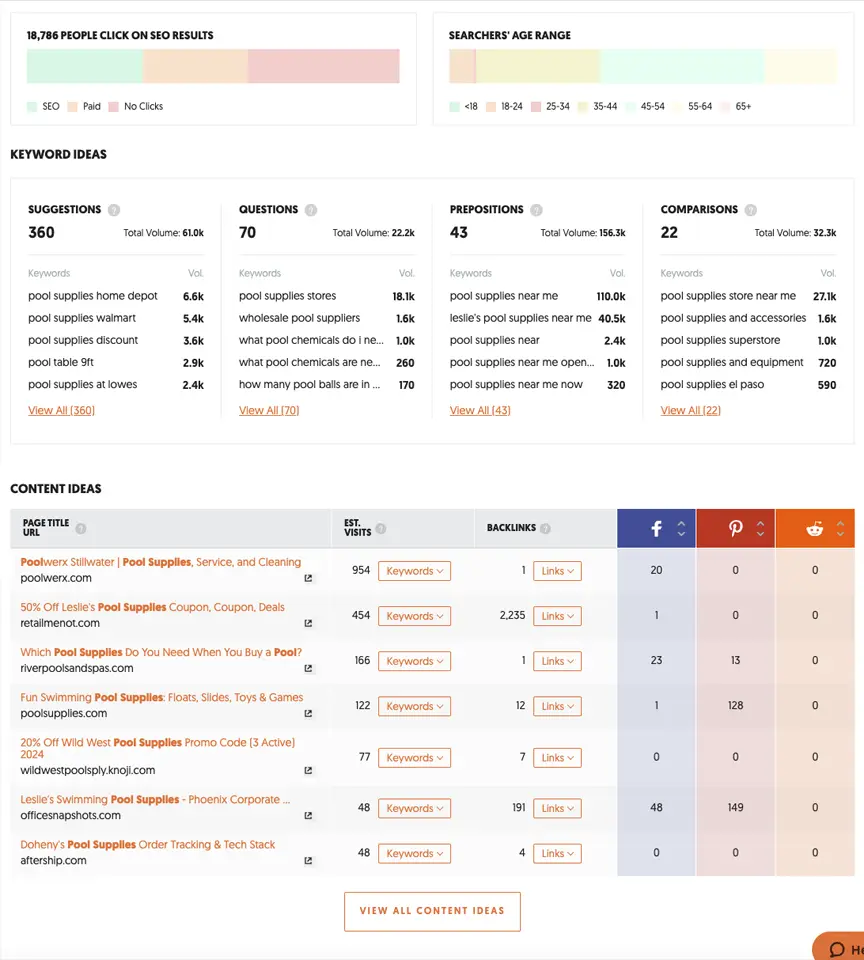
Other Ways to Uncover Long-Tail Keywords
The creativity doesn’t stop here! Long-tail keywords can be found by scouring forums, browsing Quora or Reddit, and generally keeping an ear out for questions people ask in your industry. This strategy lets you hear the language your audience uses, making it easier to connect with them.
There are many tools out there for keyword discovery – try them all to see which best suit your needs. No single tool is perfect, but together, they can help you uncover keywords your competitors haven’t even thought of yet!
Find Long-Tail Keywords with Blumoo Creative
Blumoo Creative has years of experience digging up the best long-tail keywords, and we’re happy to share our insights with you! Our keyword research services are built into our SEO and PPC management packages. If you’re ready to get serious about long-tail keywords and make your website the destination for quality traffic, reach out to us online or give us a call at (916) 223-0367 today!





